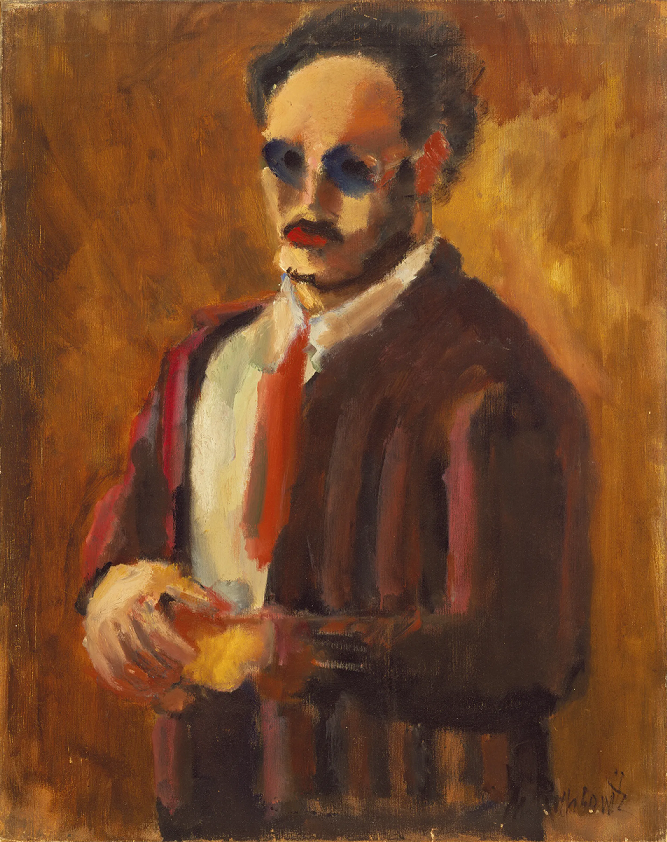
Mark Rothko, Self-Portrait, 1936. Oil on canvas.
© 1998 Kate Rothko Prizel & Christopher Rothko/Adagp, Paris, 2023.
Source: VOGUE.
“I belong to a generation that was preoccupied with the human figure; it did not meet my needs. Whoever used it mutilated it,” proclaimed Mark Rothko in 1958.
It may be a surprise, then, to learn that the Abstract Expressionist in fact painted figurative works for the better part of a decade. This figure-based foray comprises Rothko’s early works, which fill the first two rooms of the blockbuster retrospective “Mark Rothko” at the Fondation Louis Vuitton in Paris, featuring some 100 paintings. Co-curated by the artist’s son, Christopher Rothko, with Suzanne Pagé (who organized the artist’s last retrospective in France, at the Musée d’Art Moderne de la Ville de Paris in 1999), the exhibition is on view through April 2024.
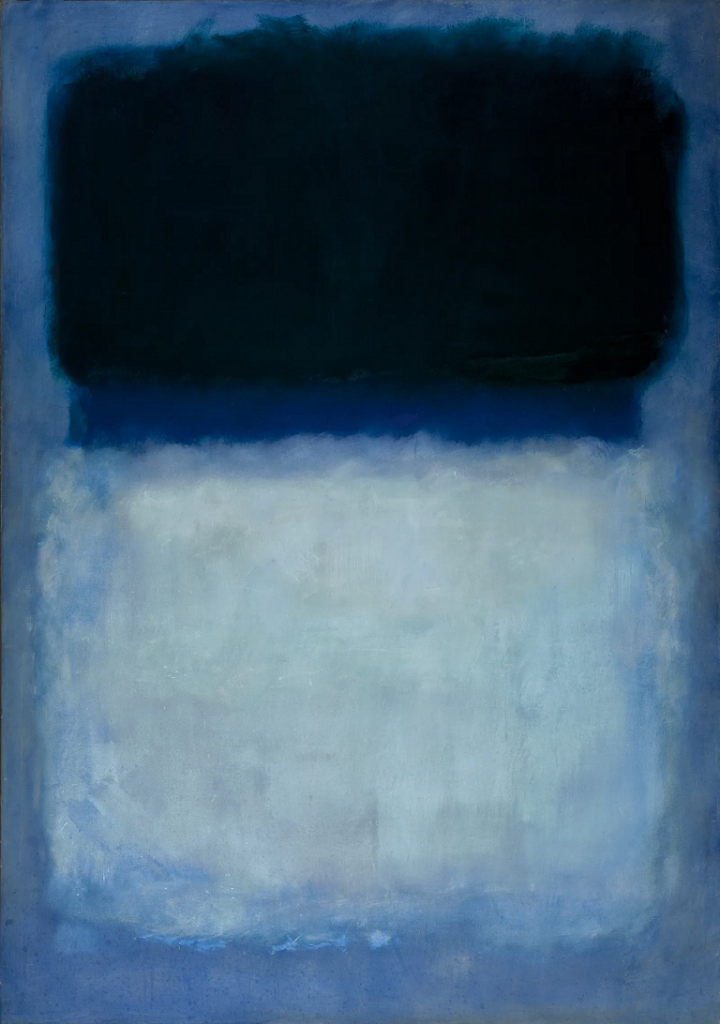
Artwork: Green on Blue (Earth-Green and White), 1956. Oil on canvas.
© 1998 Kate Rothko Prizel & Christopher Rothko/Adagp, Paris, 2023.
Source: VOGUE.
In fact, Rothko didn’t just paint figures, it was people he was after. In the 1930s, this took the form of tableaus of intimate scenes and urban landscapes, often featuring nudes, influenced by Milton Avery and Henri Matisse. These works, centered on human subjects, then led to a playful, Surrealist style alluding to Greek and Christian epics and myth. “Rothko’s ideas about art, often expounded early in his career, are indicative of an ideal, one he did not yet know how to fully express pictorially,” wrote the artist’s son, Christopher, who oversees his father’s estate, in the exhibition catalogue.
By 1940, Rothko abandoned portraying people, and removed figuration from his practice entirely by the mid-1940s. Curators of his work, until recently, have largely shied away from exhibiting this incongruous period. Even American Rothko devotees haven’t seen the likes of Untitled (woman arranging flowers) (ca. 1935), which belongs to the National Gallery in Washington, D.C., where it usually sits in the stacks. This painting traveled to Fondation Louis Vuitton alongside rare examples from pre-abstraction Rothko, including from the private holdings of the artist’s children, Christopher Rothko and Kate Rothko Prizel, such as the 1937 work Untitled (The Subway) and 1944’s Tiresias.
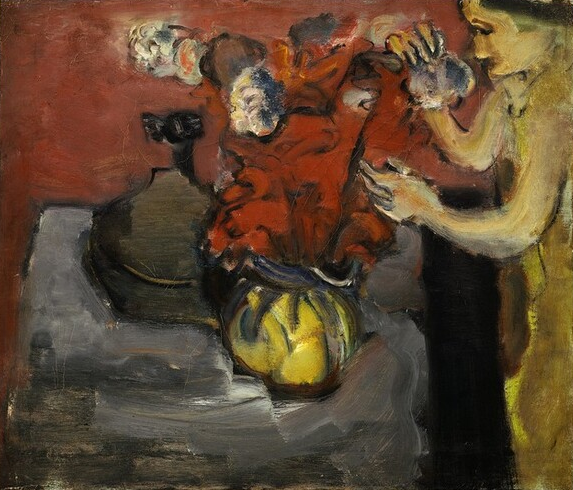
Mark Rothko, Untitled (woman arranging flowers), c. 1935.
Source: National Gallery of Art.
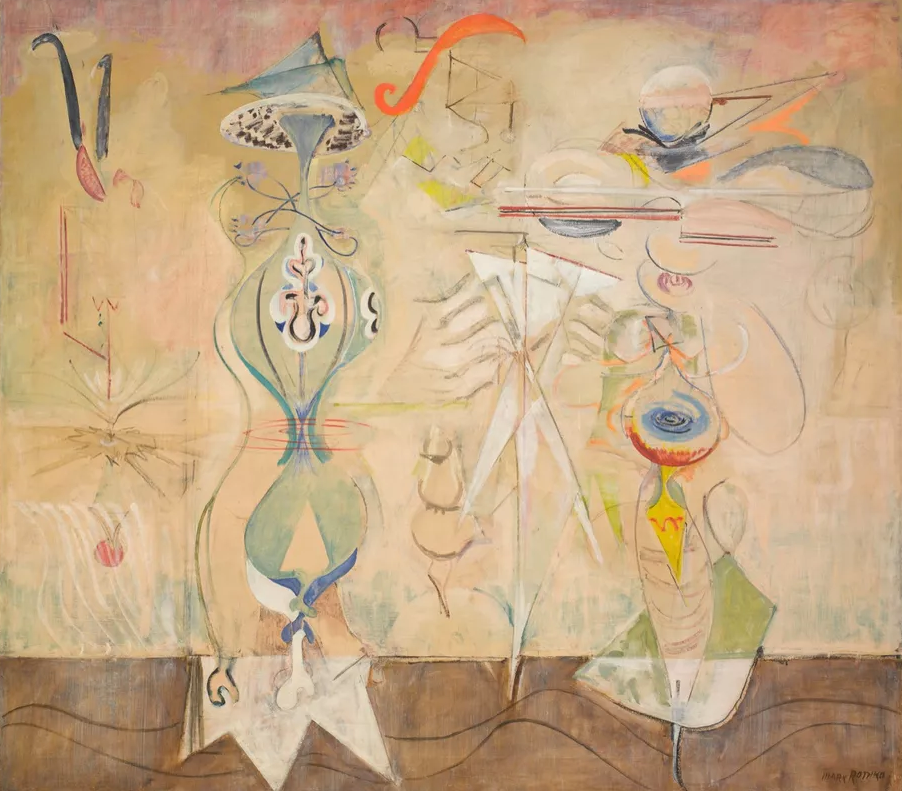
Mark Rothko, Slow Swirl at the Edge of the Sea, 1944.
© 1998 Kate Rothko Prizel & Christopher Rothko – Adagp, Paris, 2023
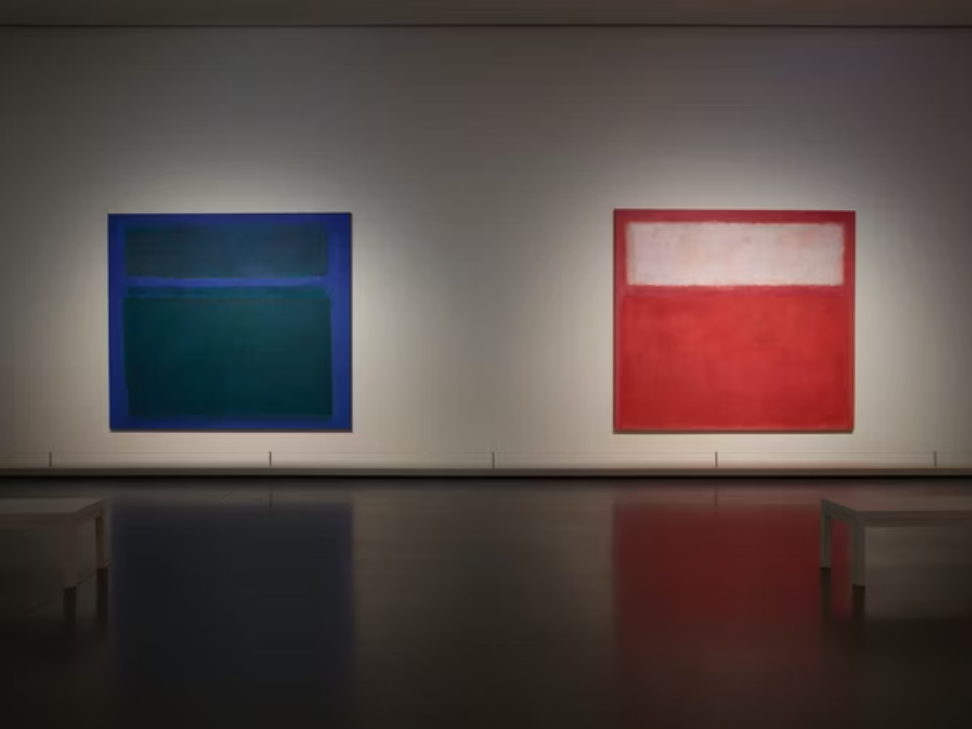
Vue d’installation de l’exposition Mark Rothko, galerie 5, niveau 1, salle Seagram Murals Paris.
© 1998 Kate Rothko Prizel & Christopher Rothko – Adagp,Paris, 2023.
Source: FONDATION LOUIS VUITTON.
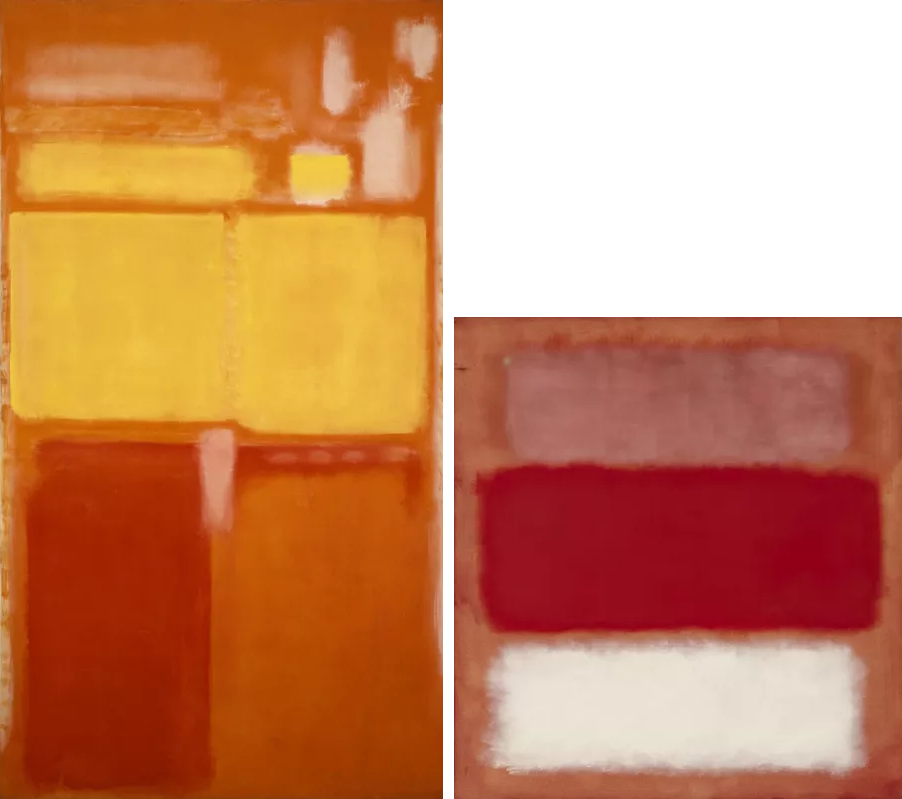
Left: Mark Rothko, No. 21, 1949.
© 1998 Kate Rothko Prizel & Christopher Rothko – Adagp, Paris, 2023.
Right: Mark Rothko, Light Cloud, Dark Cloud, 1957.
© 1998 Kate Rothko Prizel & Christopher Rothko – Adagp, Paris, 2023.
However, the exhibition also provides something much simpler and more fundamental: access. “Rothko” is the first retrospective of the artist in France since 1999. Fondation Louis Vuitton founder and CEO of luxury conglomerate LVMH, Bernard Arnault, took on the cause: “[Rothko] is still too poorly known and acknowledged in France and Europe,” Arnault said. “I therefore wanted the Fondation to redress this injustice, to fill an unfortunate gap largely explained by his underrepresentation in museums and collections here.”
What results is a chart of the artist’s own evolution, a timeline that functions both as an introduction and an advanced inquiry. A first for France is the hanging of the group of paintings known as the “Seagram” murals, whose origin story has shaded the painter’s legacy with bravado. In June 1958, Rothko received a commission for the Four Seasons restaurant in the Seagram Building, on Park Avenue in New York, but by December 1959, after an ideological disagreement with the ultimate direction, he bowed out and kept the suite of nine works to himself. He went on to make 30 in the series in total; but in 1969, Rothko bequeathed these original nine commissions to Tate Britain, where they’re been housed since. (Grimly, the works arrived in London the day of his suicide.)
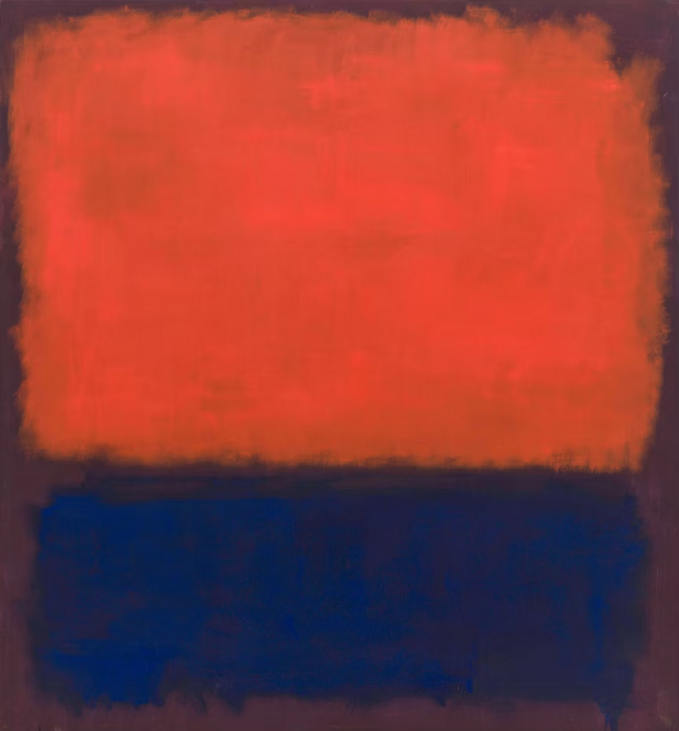
Mark Rothko, No. 14, 1960.
San Francisco Museum of Modern Art, Helen Crocker Russell Fund purchase.
© 1998 Kate Rothko Prizel & Christopher Rothko – Adagp, Paris, 2023.
Source: FONDATION LOUIS VUITTON.
The series was a turning point for Rothko, the first time he could create an entire room surrounded by his works. “I have always maintained that if I should be given an enclosed space which I could surround with my work, it would be the realization of a dream I have always had,” Rothko said. In the years since, “Rothko Rooms” have proliferated in collections that hold his works: at Tate Modern in London, and at Washington, D.C.’s National Gallery, for example. The curators of the Fondation Louis Vuitton show arranged for the “Rothko Room” from the Phillips Collection, also in Washington, D.C., to loan its holdings, which include classic examples from 1953–57, including the vibrational The Ochre (Ochre, Red on Red) (1954), as well as Green and Tangerine on Red (1956).
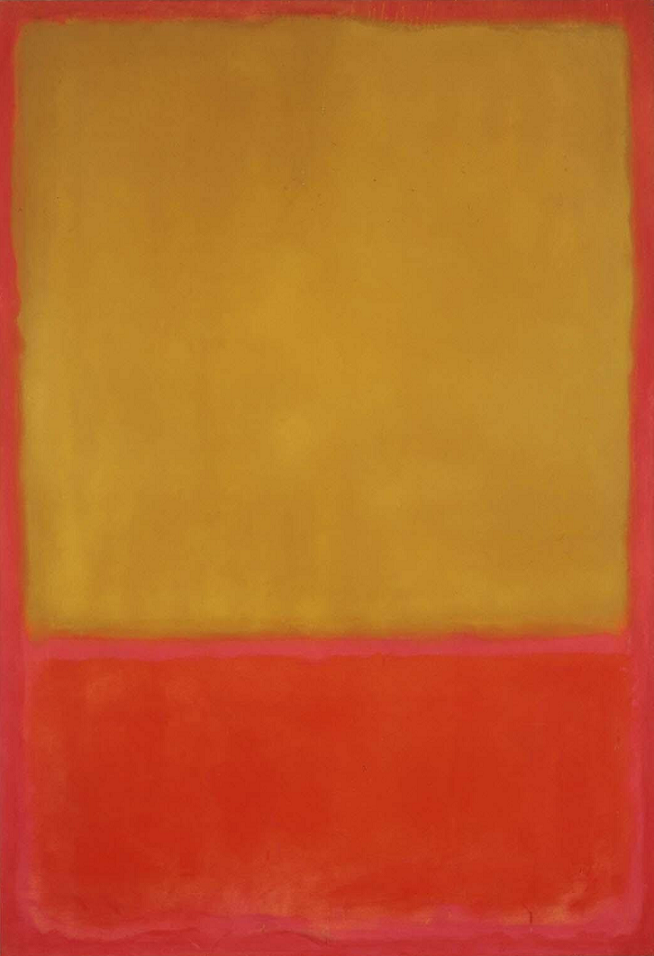
Mark Rothko, Ochre and Red on Red, 1954.
Source: The Phillips Collection.
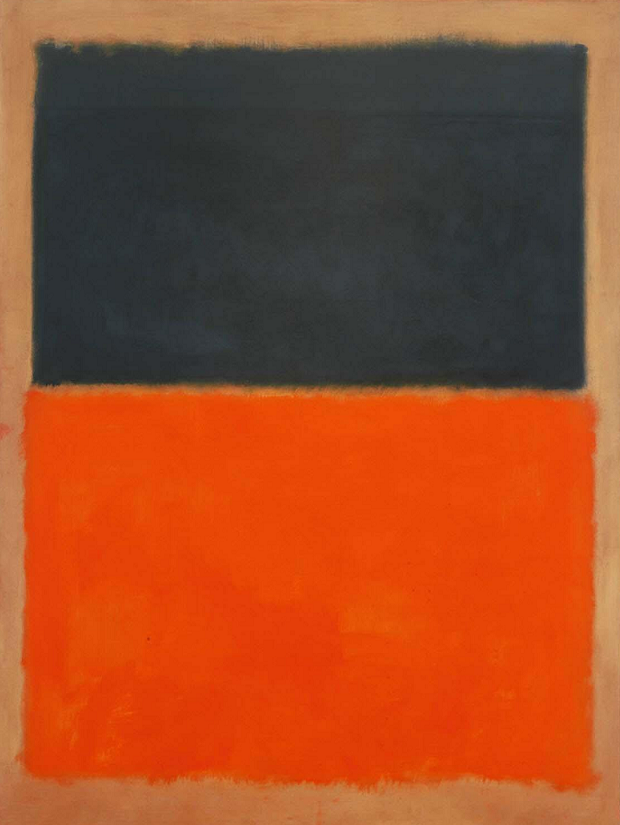
Mark Rothko, Green and Tangerine on Red, 1956.
Source: The Phillips Collection.
The “Seagram” murals pinpoint a shift in Rothko’s color palette as well: It was the moment that the painter embraced darker shades. Thus began his series of “Blackforms,” which pushed deeper into muddy maroons, browns, and tones of black. Rothko never relinquished his sumptuously saturated jewel tones, however. That fascination of light became the absence of it, perhaps most starkly revealed in the “Black and Gray” series from 1969–70, often regarded as a reflection of Rothko’s depressive mental state at the time. These works once again feel anticipatory, particularly of the wave of Minimalism that would soon hit contemporary art. This series closes the exhibition, where the works are paired with a large-scale figurative sculpture by Alberto Giacometti.
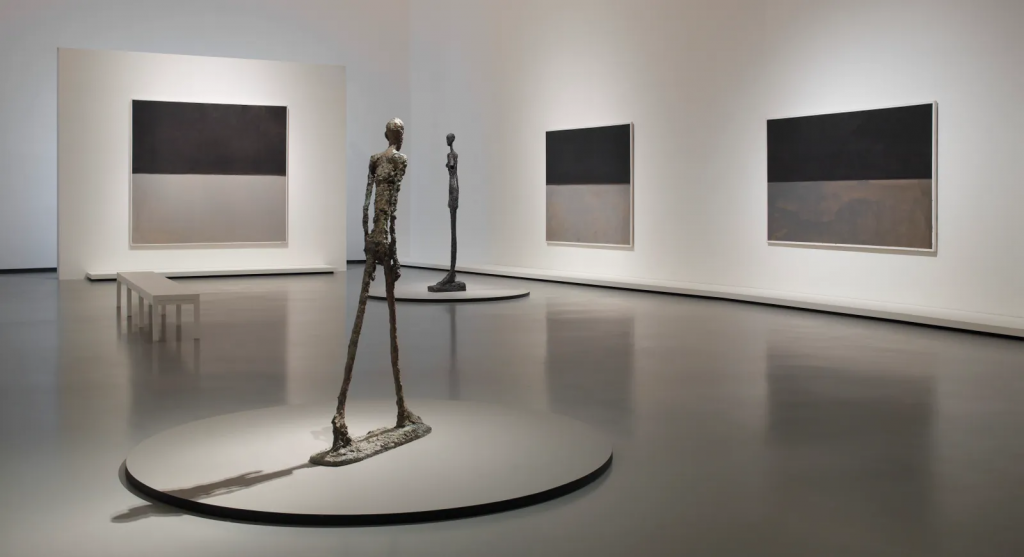
Paintings by Mark Rothko and sculptures by Alberto Giacometti.
Photo: © 1998 Kate Rothko Prizel & Christopher Rothko;
© Succession Alberto Giacometti © Fondation Louis Vuitton / Marc Domage.
Source: VOGUE.
Rothko often reiterated that his artistic project was “to express the human condition—the human drama—in his work. This focus on our common experience is a constant touchstone in his output,” explained his son Christopher in the catalogue. In particular, the artist fervently believed that art had the power to linger after one’s physical presence is gone. This exhibition explains the artist’s need to strike at the primordial and universal, unafraid to embrace darkness in a quest for light. Rothko speaks an immediate and profound language of humanity, of existence. “A painting is not a picture of an experience. It is an experience,” he wrote in his private journal-cum-manifesto, The Artist’s Reality: Philosophies of Art. This moment is ripe for a reminder of just how radical embracing humanity, in its totality, really is.
Written by Julie Baumgardner
Source: Artsy







